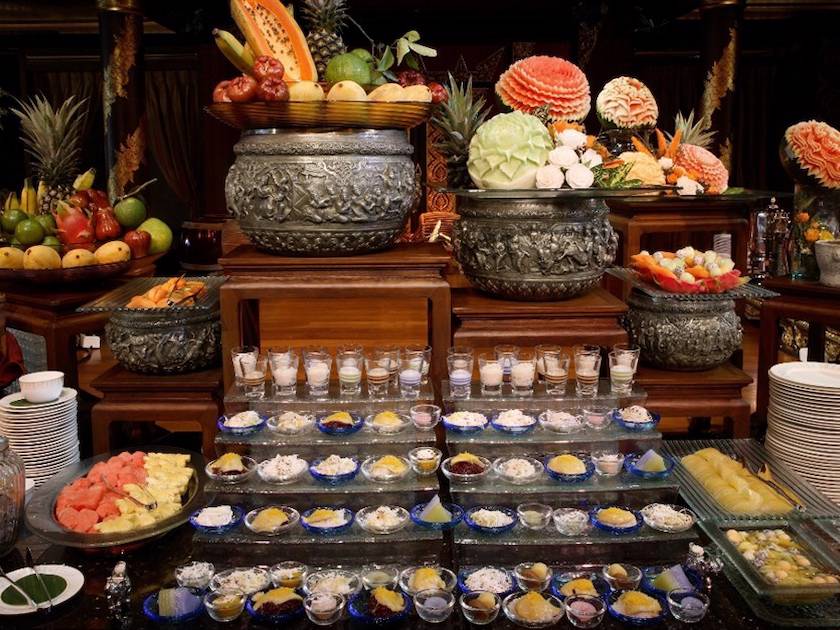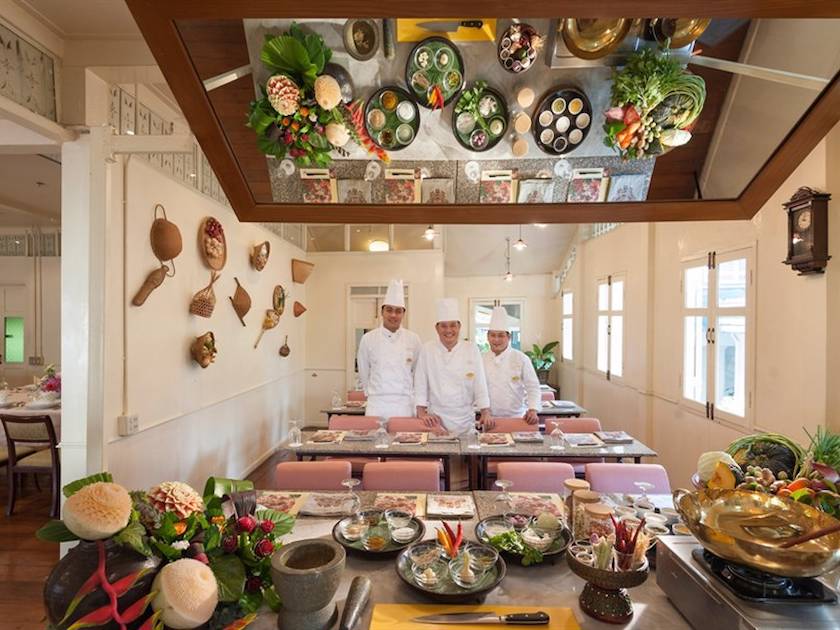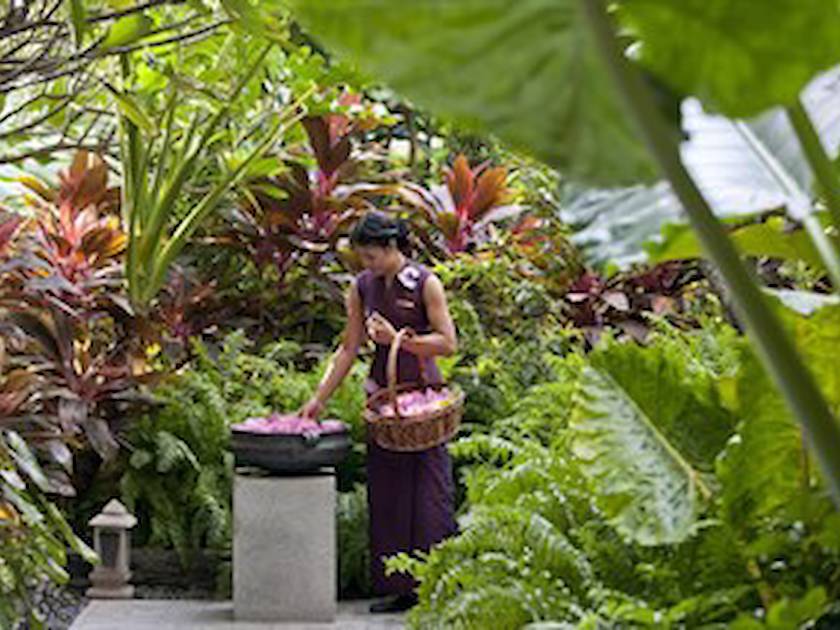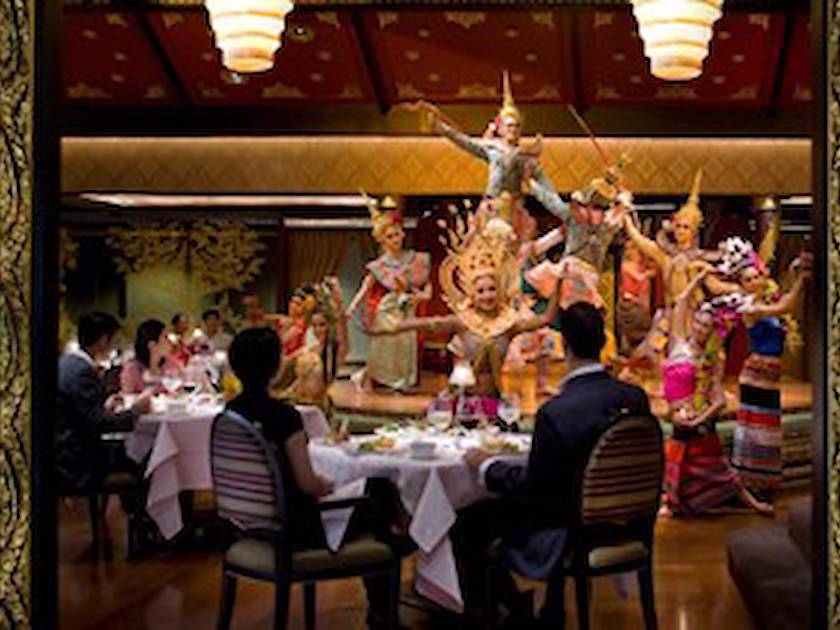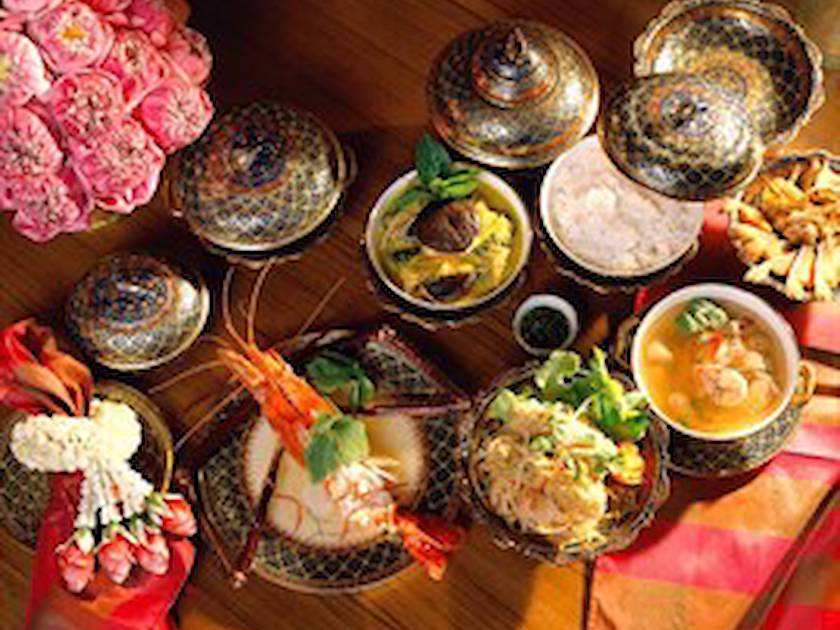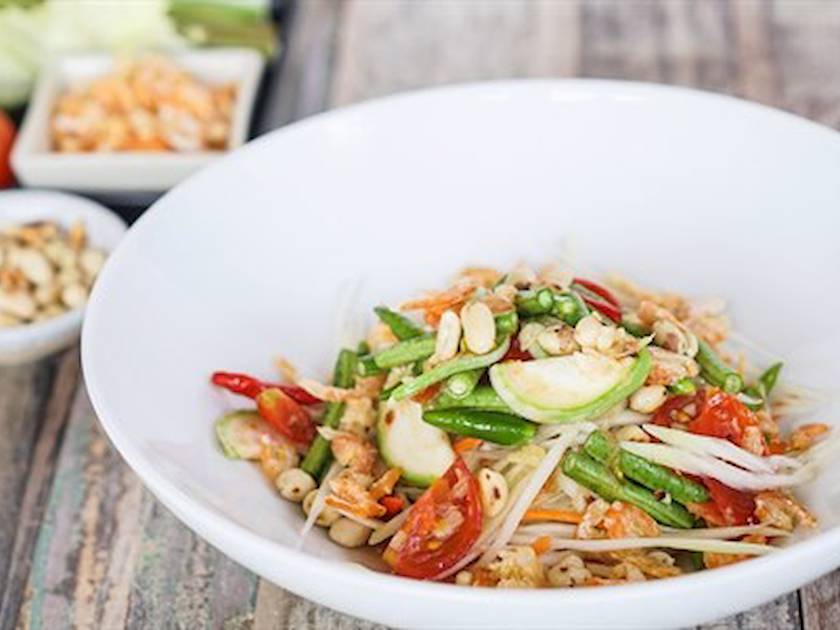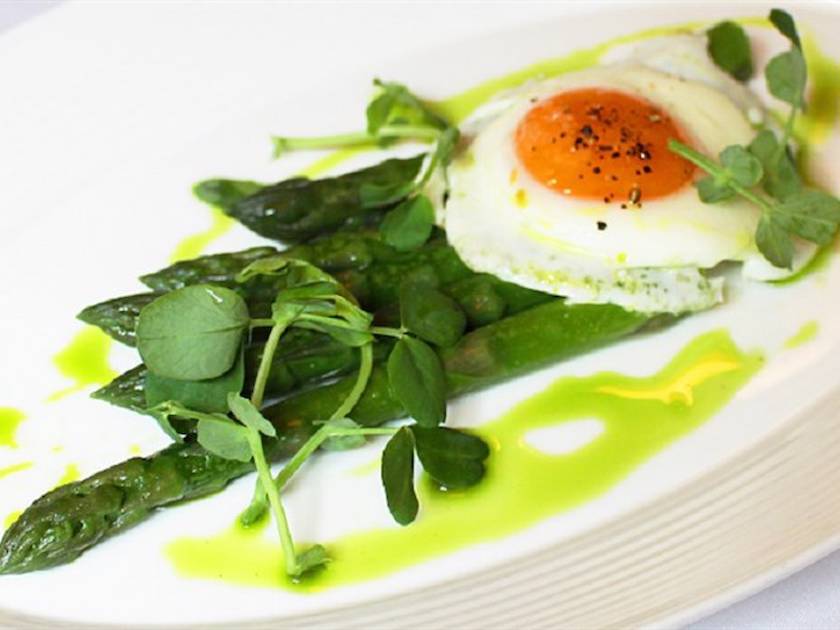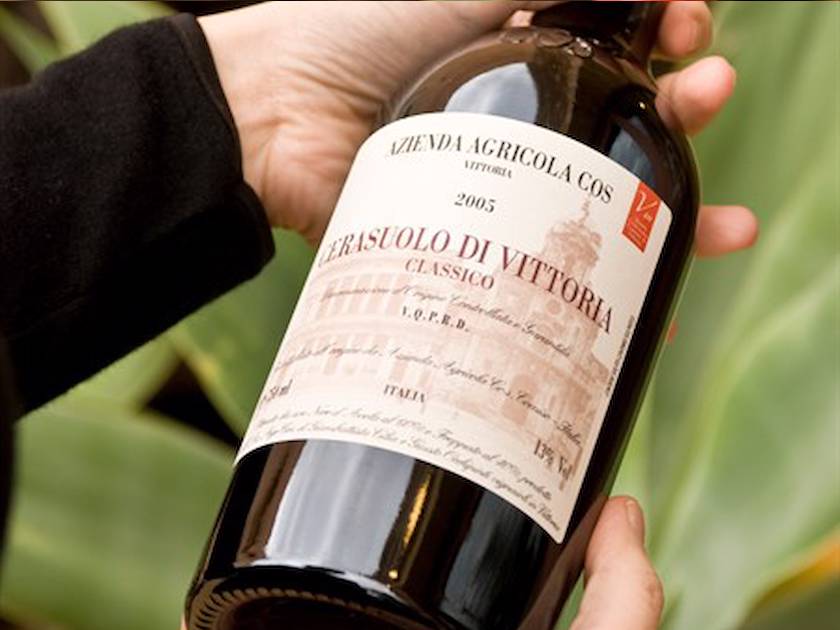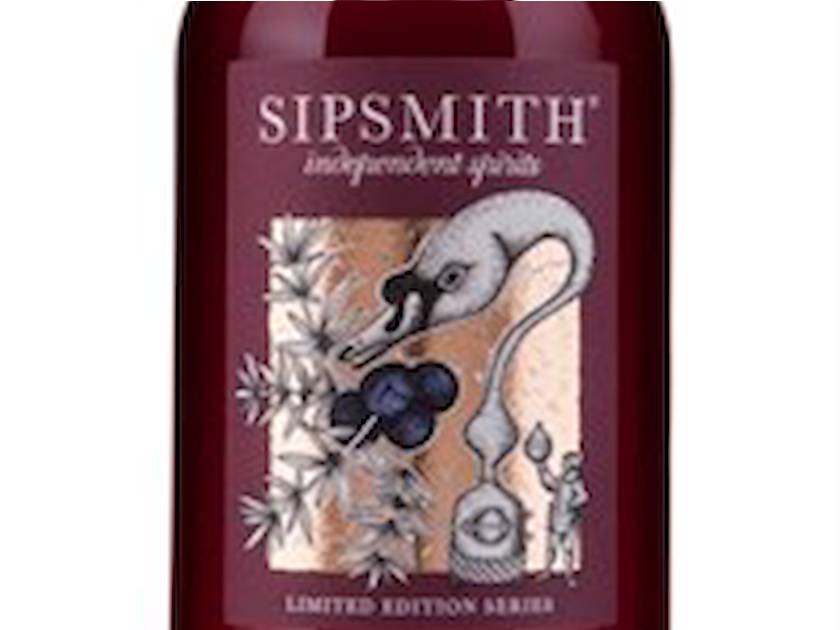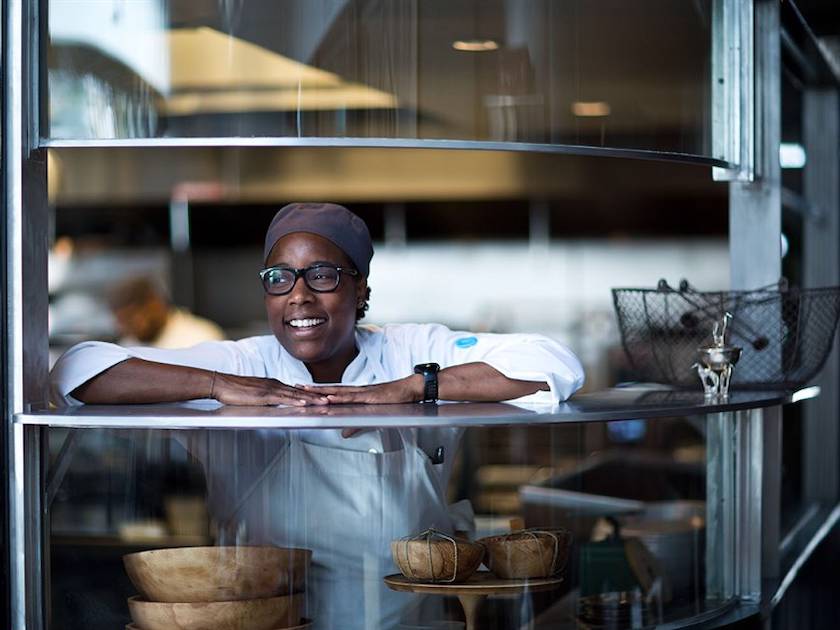Thai cuisine - Spice it up
Travel anywhere and food is part of the experience, and that is certainly true in Thailand. The very history of Thailand is expressed in the food, and meals are an integral part of any social occasion.
Resting in the heart of Asia, Thai cuisine has borrowed much from its neighbours over the centuries; China contributed noodles and wok cooking, India introduced curry and the Vietnamese developed the special Phad Thai noodle. But the Thai people have given all these dishes a unique twist and made them their own. Today, as in the past, food is an essential part of the social fabric. Meals are eaten family style and while there is one dish for each person, every dish is shared with the group. And if you want to look native, don’t use a knife – Thais use a spoon. Unlike many cuisines, indulging in a food fest in Thailand won’t add kilos to the scales as so many components of traditional dishes centre around vegetables, spices, herbs and other good-for-you ingredients. So feel free to indulge. I sure did on my tour of Bangkok and Chiang Mai.
SHANGRI-LA. Bangkok is a bustling city of over 10 million people so the sheer number of restaurants, not to mention hole-in-the-wall street food outlets, is mind-boggling. I am staying in a gorgeous suite at the Shangri-La Hotel overlooking the Chao Phraya River. The river is revitalising as a lively part of the city and I decided to take a free teakwood shuttle boat to the nearby Mandarin Oriental to experience Sala Rim Naam on my first night in the city. The restaurant, housed in a northern Thai style pavilion, serves up traditional Thai cuisine along with a lavish dance show. When I was there, the restaurant dining room was under renovation (it’s open now) but it was serendipity because it was a perfect night for dining al fresco at Terrace Rim Naam. I enjoyed the river to my right and dancers to my left. While the show dazzles with gorgeous women in opulent costumes, it’s executive chef Vichit Mukura’s food that is the real showstopper. Opt for the chef’s tasting menu or do as I did and go a la carte. My dining companion and I shared appetisers that included Chor Muang (steamed flower shaped dumplings filled with herbed crabmeat) and Guay Tiew Goong Hor (steamed prawns and salad wrapped in rice noodles with chilli lime sauce). Our main courses included deep-fried fish with chilli tamarind and sweet and sour sauce and red chicken curry. I ended the meal with the most traditional Thai dessert, mango sticky rice.
ONE FULL DAY. With just one day to spend in Bangkok, I had to make the most of it. My guide, George, from Thai Tour Guide, dutifully took me to the Grand Palace and Reclining Buddha temples, which were madhouses because it was the start of Lent. Both were stunning and must-sees, but I was thrilled when he suggested a small, family-owned restaurant for lunch. It was the kind of place you want to go to but don’t because without insider knowledge you’d be too worried about getting sick. I knew George wouldn’t steer me wrong and we took a table in the very small space where I was the only Western face in the crowd. The owner created a delicious vegetarian noodle dish for me and offered up an array of spicy seasonings to add to it. The tab, including a drink, came to about two pounds. Not bad!
FINEST FLAVOURS. That night for dinner I did a 180° turn and went to one of the hottest tables in town, “nahm,” in Como’s Metropolitan Hotel. Helmed by David Thompson, “nahm” was awarded the prestigious World’s 50 Best Restaurants honour. There used to be one in London, but now Bangkok is the only outlet. Nahm focuses on authentic cuisine created from centuries-old recipes to which Thompson is privy. His food perfectly balances the flavours of Thai cuisine, resulting in sophisticated, mouth-watering dishes. My companion and I tried several plates including a salad of wild mushrooms with grilled prawns and chilli jam; coconut and turmeric curry of blue swimmer crab with calamansi lime; scallops stir-fried with spring onions and chillies; and stir-fried pork with dried prawns, apple eggplants and chillies. My Thai dinner partner tried to warn me away from the durian and sticky rice, but I assured her that I’m ok with the stinky fruit. She opted for the lychees in scented syrup with Thai cup cakes. Despite the sharing mentality, she didn’t ask for any of the durian!
CHIANG MAI. Going on the philosophy that it’s better to teach a man to fish (or rather a journalist) than it is to give it to him, I decided to learn how to make Thai food so I could bring these intoxicating flavours home as my souvenir. I enrolled at Anantara Resort’s Spice Spoon Cooking Class in Chiang Mai. The morning began with me jumping in a tuk-tuk rickshaw with a line chef and heading to the San Pha Khoi market to collect some vegetables and spices to use later. Each person in the small class had the opportunity to choose what they wanted to cook, and ultimately eat, from several selections. Chef Songpol Ponkaew and I began making the Tod Man Pla, or Thai fish cakes. Unlike crab cakes there is no breading used, just fish, curry paste, spices and an egg. As I fried them up, Chef organised the ingredients for the Tom Yum Goong (spicy prawn soup). Lots of lemongrass, lime leaves and chillies go into this soup, so Chef was busy trying to teach me how to cut the spices correctly. This was by far the most challenging part of the dish for me. The main course was Pla Kapong Nung Manow (steamed sea bass) – Chef taught me how to fillet a fish and I was shocked when I did a decent job of it. We added spices into the fish and used the sous-vede technique to cook it, while I also whipped up a spicy chilli sauce. I was encouraged to taste throughout the cooking process to decide if I wanted to add more heat, acidity or sweetness to my dishes. Since we modified several things, I realised just how important it is to keep on tasting as you cook. “Everybody thinks Thai food is difficult to make, but it’s not if you know the right techniques,” says Chef Ponkaew. I agree. When I sat down to eat my dishes, I was pretty surprised – it wasn’t just palatable, it was good!
GINGER KAFE. Despite my budding culinary career, I decide to leave dinner to the experts at Ginger Kafe, a local hangout. This colourful, quirky café is located in an old house that local legend says used to house a royal family. Today it is both a store featuring unusual goods with Scandinavian flair (the owner is from Denmark) and a restaurant serving up both Western and Thai food. When I dined there the kitchen had just formed a partnership with Chef Ann, the beloved woman who runs the cult favourite Green Chilli food stall on weekends at the Chatuchak Market in Bangkok. Green Chilli is the place where all the trendy Bangkok chefs go to eat. Chef Ann is now sharing her flair for curry, dispensing some of her secret recipes and tricks with Ginger Kafe. You could really taste the results in the duck red curry and the seafood green curry.
ANNA AND THE KING. The next day is spent seeing the sights, temples and handicraft factories of Chiang Mai with my guides from Chiang Mai Local Tours. I had worked up quite an appetite and decided to spend my last meal at Pillars 137.A member of The Leading Small Hotels of the World, the hotel is arguably the most luxurious in the city. The 30-room boutique property was once home to the son of Anna Leonowens, who was immortalized in Margaret Landon’s book Anna and the King of Siam. Its main restaurant is simply called The Dining Room and was named the best restaurant in Thailand in The Thailand Tattler. The kitchen has a new chef in Amporn Cherng Ndarm, the former private chef to the princess of Saudi Arabia. The opulent Dining Room makes guests feel like royalty and is typical in northern Thailand. The food was less spicy than I was expecting. Start with dishes like Yu Som-o Pou Nim (a pomelo and crispy soft shell crab salad) or Nuea Yang Yuma-gun (a zesty Charolaise-Simmental Thai beef, lemongrass and grape salad). For main courses we tried Gaeng Tay Pho, a pork confit curry with Siamese morning glory and grilled kaffir lime; Kao Soy, a Lanna inspired curry with yellow egg, crispy noodles and seafood; and Larb Hed Song Krueng Jay, marinated tofu, mushrooms in a non-oiled chilli-lime dressing. Dessert was parched coconut, soft meringue, mascarpone and marinated berries and a selection of sorbets. A visit to Thailand will overwhelm all your senses – from the stunningly ornate temples to the city sounds of busy Bangkok to the intoxicating smells of the food and the memories that the flavours leave on your taste buds.
Getting there:
There are direct flights from London to Bangkok on Eva Air, British Airways and Thai Airways. Bangkok Airways and Thai Airways fly from Bangkok to Chiang Mai.
Lodging:
Shangri-La Bangkok http://www.shangri-la.com/bangkok/shangrila/
Anantara Chiang Mail http://chiang-mai.anantara.com/
Pillar 137 http://www.snhcollection.com/137pillarshouse/
Restaurants:
Sala Rim Naam http://www.mandarinoriental.com/bangkok/fine-dining/sala-rim-naam/
Nahm http://www.comohotels.com/metropolitanbangkok/dining/nahm
Ginger Kafe http://www.thehousethailand.com/kafe.php
The Dining Room http://www.snhcollection.com/137pillarshouse/dining/
Spice Spoon Cooking Class http://chiang-mai.anantara.com/Anantara-Chiang-Mai-Cooking-Class/
Private Guides
Thai Tour Guide http://www.thaitourguide.com/
Chiang Mai Local Tours http://www.chiangmailocaltours.com/
More related Stories
Fine dining at Stoke Park in Buckinghamshire
Fine Italian cuisine in Lake Como, Italy
